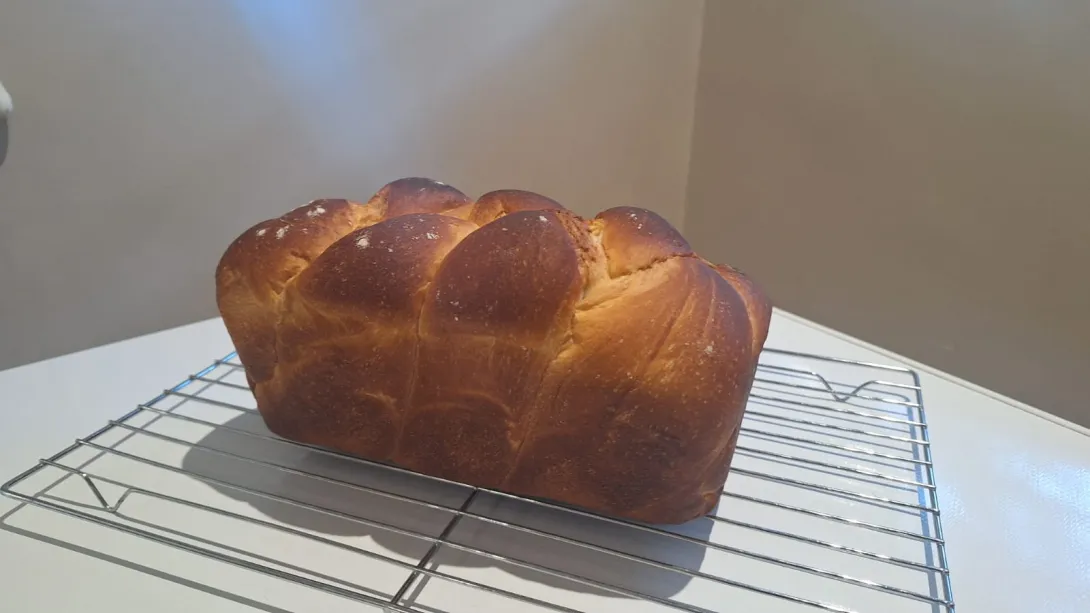
Although I'm almost certainly wrong in saying this, for me there seems to be surprisingly few bread (not dessert/kuih) recipes that have glutinous rice flour as an ingredient. In a gluten-free context, you can see the attraction, as Nathan Myhrvold says, "When hydrated in doughs and then baked, it retains a particular chewiness reminiscent of gluten." It's the kind of gluten-like chew that glutinous rice flour brings that is also getting people looking at other starches (and even modified starches like Expandex/Ultratex) in gluten-free baking.
But wait! This bread isn't gluten-free! In fact, it is very much a gluten containing bread as Mandy Lee takes pains to point out in the recipe on her site Lady & Pups. What you have here is a soft, no, ultra-soft!, enriched white bread with 24% glutinous rice flour. All the glutinous rice flour is added into the tangzhong. This particular recipe doesn't contain milk, so isn't a "fully" fledged Asian milk bread, perhaps more akin to a challah with good chew! It also isn't a mochi-bread.
This delightful bread apparently is a thing from a Korean bakery in Beijing, and also from a bakery inside a supermarket in Hong Kong, according to the author. I'm hoping it isn't actually all that niche, and maybe someone here knows of something like it, perhaps it is even a well-known style of bread!
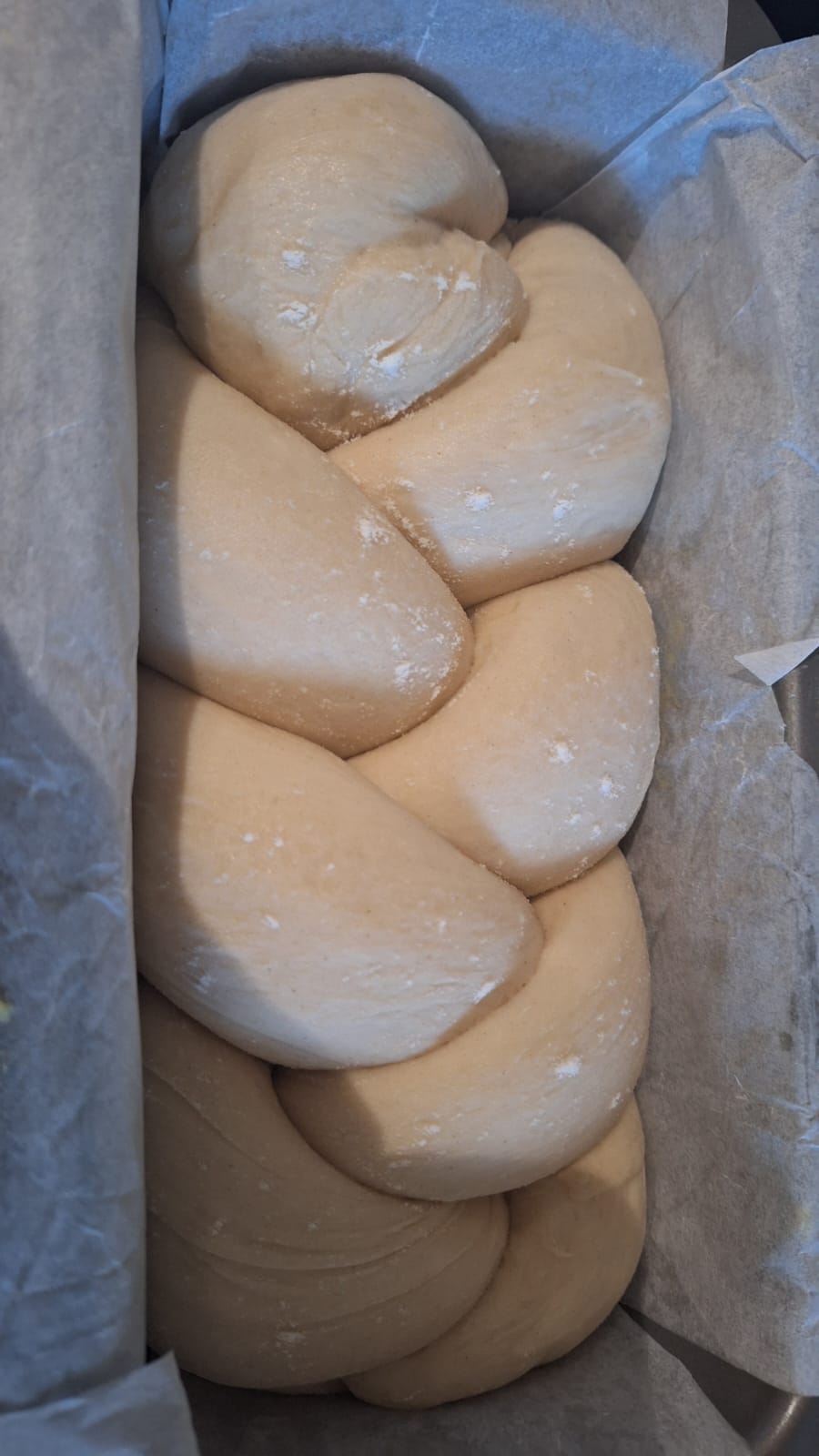
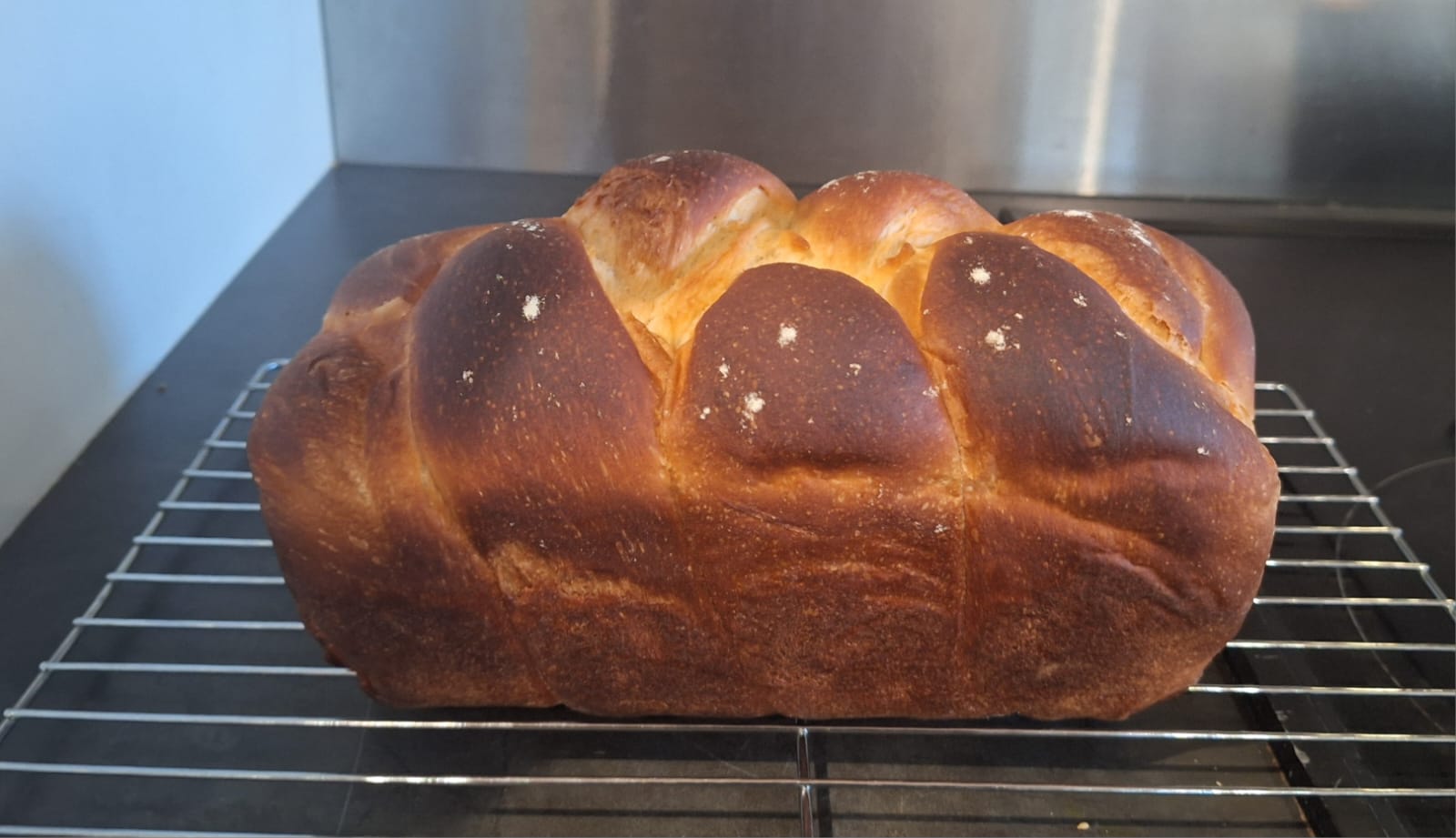
It is a little painful to make - the glutinous rice tangzhong isn't clean or easy to work with, and you certainly need a mixer to stir the dough and incorporate the butter, not something to try by hand. Thinking about it, it would be much cleaner and neater to mix the glutinous flour in dry with the other dry ingredients. But, in the recipe it does say that the roux (tangzhong) is essential for getting that specific chew and moisture, which it certainly delivers. Additionally, all the water is added into the roux, with the only additional moisture coming from the egg whites.
Bake a little shorter than the timings suggested in the recipe and tent with foil for the last 10 minutes to avoid it getting too dark.
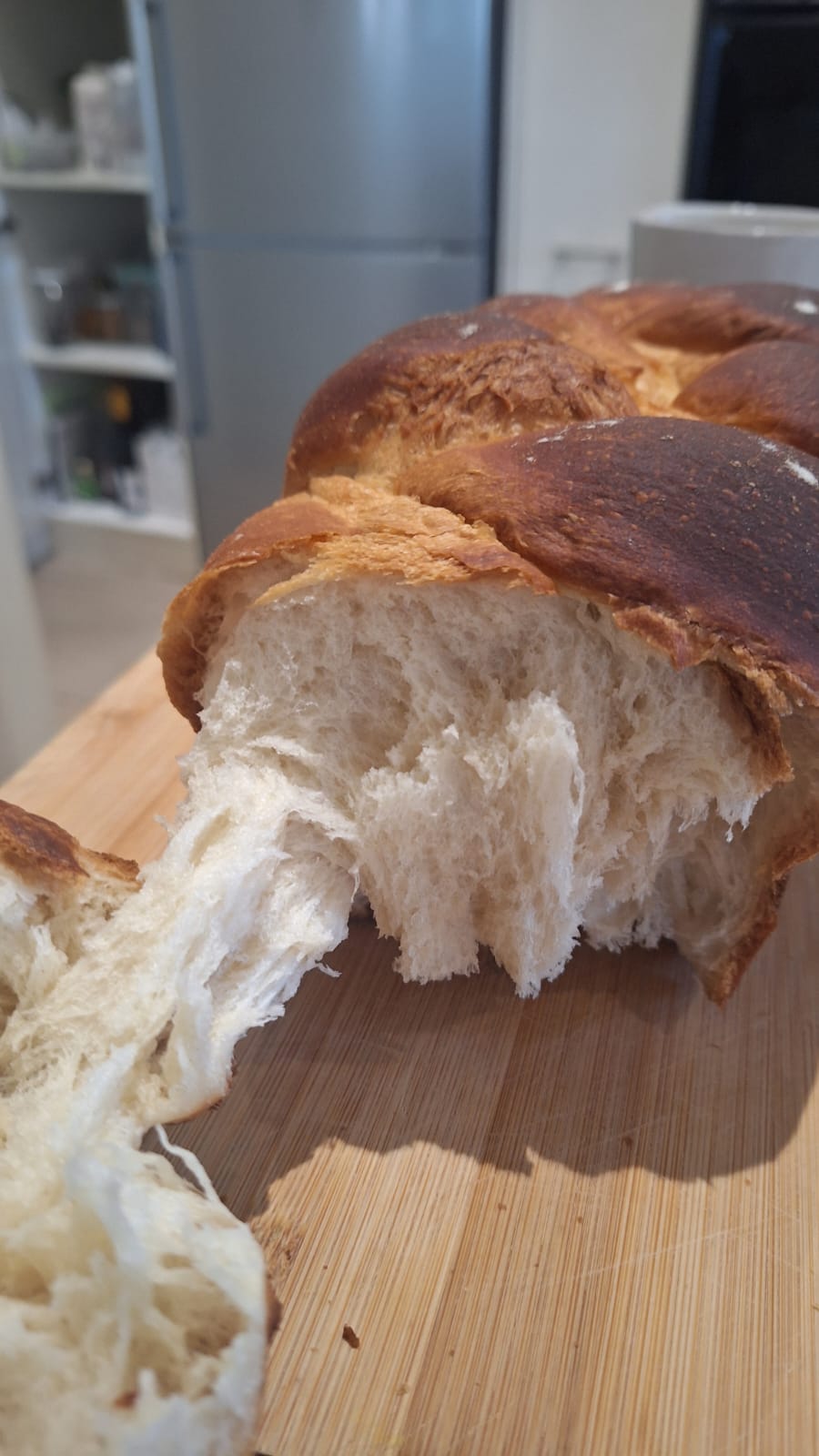
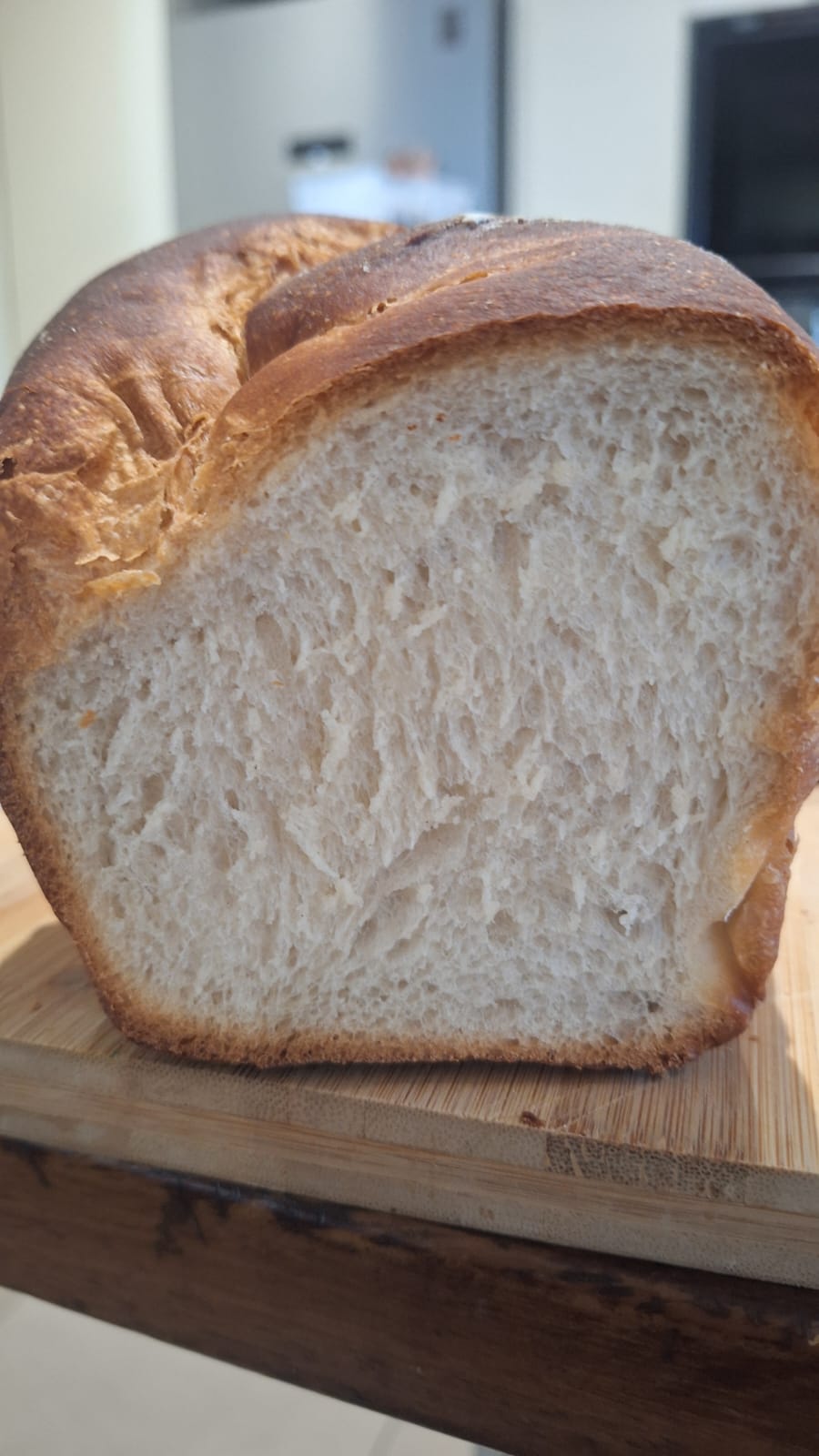
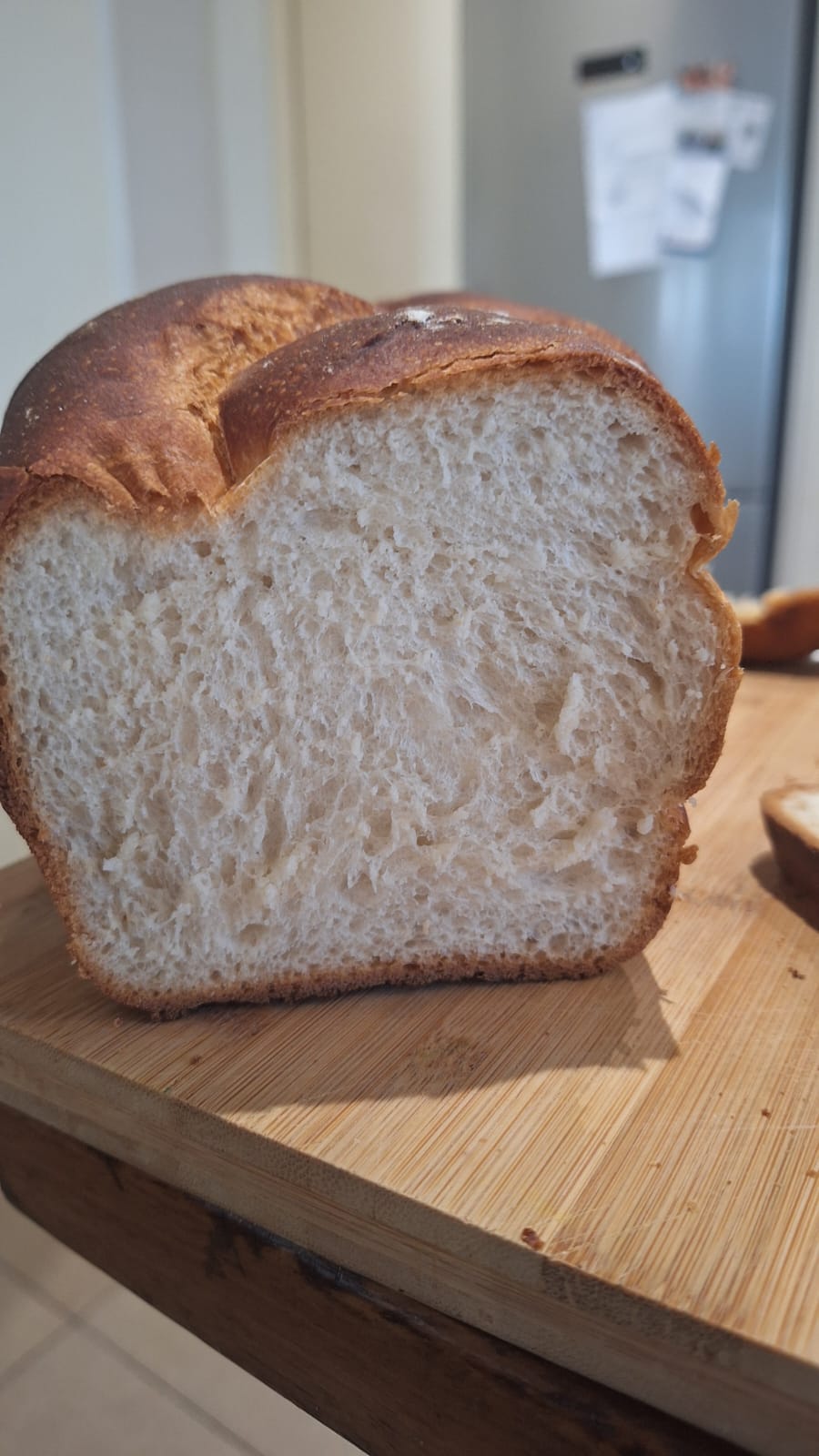
The baked bread can be stretched, and pulled, and torn, or shredded as you'd expect. The mouth chew and bounce isn't as pronounced as I expected, it is just right, and if you weren't told about the sticky rice flour you might think this is just like a nice chewy challah.
I enjoyed this bread much more than I expected, but well, it is now time for me to take what I've learnt here and apply it to wholesome gluten-free breads.
-Jon
- JonJ's Blog
- Log in or register to post comments
Excellent bake, Jon! I have a soft spot for braided pan loaf with extra dark color
I'm so obsessed with this post. Love it!
Jay
Thanks Jay. While I do like them dark this one got dark a little faster than intended and I didn't tent it with foil fast enough! The crust was a very nice counterpoint to the soft interior though.
-Jon
I reply here regarding my starter, so I don't hijack Abe's thread (I have this bad unintentional habbit of hijacking people's spotlight lol. I'm working on it! My bad!)
So what you asked is specific to the present moment, right?
I usually judge maturity by smell and heat produced, because bran (duh!). Ever since she was atta flour, opening the jar when she has matured, is like opening a bottle of mead or stout (as opposed to when she was liquid, it was like opening a bottle of fruit vinegar). The smell is alcoholic, caramely, and like really overriped bananas. As 30-50% hydration levain, because of the bigger size, the container becomes warm too.
I had this idea of controlling flavor profile by improving osmotic pressure by adding sugar (it wasn't for enriched dough use yet at the time, as opposed to what our resident panettone experts do). It worked wonders. At some point, she can effortlessly withstand 3:2 water to sugar
Then came my desire for career pivot. I live in an Asian country, and I can't sell plain loaves, our pantry staples are not designed for bread. I have to master fluffy dough. I found out she was still having hard time withstanding butter (remember my sweet potato loaves that magically survived 37 hours of room temperature fermentation? lol)
I thought, it could be the milk. I found out skim milk is 52% lactose, and lactose is sugar. What if I replace granulated sugar with skim milk?
Boy I was wrong, in the best way possible. Usually as bran-sugar, she has 2 hours of lag phase and 4 hours of volume expansion. After being fed skim milk, her lag-phase was practically just 20 minutes autolyse and 20 minutes preshape rest, my baguettes nowadays ready for baking in less than an hour after shaping! lol 😂
And flavor is really her core competency. My crusty bread always taste literally sweet. The sweetness is always there but not dominant.
I followed the 2:1 water to sugar rule, so 1:1 water and skim milk. During her stable state, I ferment her for 2 hours at room temperature, then keep in fridge for maximum a week before next feeding (I can't risk losing her flavor profile). If I give new treatment, I ferment at room temperature for 4 hours, then keep in fridge for a week
Last feeding was her first time being fed bran:skim milk:water:butter 1:1:1:1. She already has the characteristic smell by now. Her planned feeding ratio is 4:3:3:3:3 starter:bran:skim milk:water:butter. She will always be used in 4 grams increments (so it will be 1:1:1:1 "flour":milk:water:fat on paper for easier formulating)
Jay
Thanks for all the starter detail. I can't see why we all wouldn't want the flavour and activity so I'm going to give it a try.
Tell me do you worry about the bran when you're baking something where you don't want that (e.g. a white loaf)? And also how do you work with your butter, is it always soft at your room temp? And I presume unsalted butter.
-Jon
I use fine-bran, and I have used 12 grams of bran starter for 2 kilo of dough with no problem. I have yet to use her in her current state. It's salted butter, because the butter is supposed to be an 'ankle weight', so I don't try to be delicate. And the butter softened as I mixed everything, so it's fine to use straight from fridge.
I would suggest to add one variable at a time. I can't generalise, and in my own experience, conversion to bran took the longest and requires patience. You may need to test it during several feeding cycles as it transitions by making mini levain. If you're not in hurry, a gentler way is by fermenting it at room temperature for 4 hours, then let it sit in fridge for a week, then test it in mini levain. But this can means several weeks of feeding cycles (which I did with no worry, because I was still relying on her black-rice mom at that time. But she was no longer in use, so I had to murder her *pew pew* 😃)
Hydration can be done in 30-50% range during bran-only transition. But since skim milk is so thirsty, the ratio should be 1:1:1 bran:skim milk:water during skim milk transition.
Keep in mind that her flavor profile was acquired accidentally. I do hope you get to replicate her flavor, it's like no other!
Jay
Okay, so bran, then milk and perhaps butter.
Any particular reasoning why skim milk? In my house we keep full cream, so it might be easier to try that on step 2.
Thanks again for all the details!
-Jon
for easier math, Jon. skim milk is roughly 50% lactose. If following the 2:1 water:sugar rule, that will make perfect 1:1:1 bran:milk:water
Full fat has less lactose, may need to adjust the math if the goal is to replicate her. Otherwise, your kitchen your rule, Jon! 😁
Jay
edit (for-fun read):
While lactose fermenting wild yeast is uncommon, LAB hydrolysed the sugar into glucose and galactose, both happened to be hexose sugars, preferred by yeast than pentose sugars (BUT pentose fermenting yeasts exist too, and that's one of my rationale for making low hydration sweet bran starter in the first place). So before LAB metabolise the hexoses, there could be chance for yeasts to compete on those sugars (I may need to ask Debra about this)
This looks like a really fun bread to eat, Jon! Would love to try it, but can also imagine the mess involved in making the roux and then mixing the flour in.
I've never had anything like this. Mochi bread made with tapioca flour and steamed goods with a combination of tapioca and glutinous rice flours yes, but a white loaf with glutinous rice flour is new to me.
I wonder why it wouldn't work mixed into the dough as flour, rather than as a roux. Is the gelatinous quality only activated by full hydration? I suppose the gelatinous stretch from glutinous rice behaves so differently from the stretch we get from gluten. If we bake a loaf made only of glutinous rice flour and yeast, it will collapse, right?
And then there is the other observation that tapioca flour only forms a dough when mixed with boiling water. Room temperature water and you end up with a non-newtonian fluid, or a crumbly mess. Such qualities don't apply to glutinous rice flour, but it makes me wonder if adding such ingredients to gluten free dough might somehow not be tapping on their full stretching potential.
You've got me thinking that it might be worth trying this same recipe without the roux just as a learning experience. Perhaps I will try, just for the curiosity of it.
I alluded to it, but the intention with this bread was as a precursor to experiments with glutinous rice flour in gluten-free breads. But, I found that this is a very nice bread too, and will make it again. Kiddos would love it 😉
The modernist gluten-free flour blend has 7% glutinous rice flour amongst other interesting ingredients.
-Jon
Tried it without the roux yesterday (by mixing the glutinous flour in dry with the other dry ingredients).
Whilst it was much easier to mix, I didn't get the explosive oven spring that I got the first time. So the bread wasn't as lovely.
Now this could be down to my fermentation game being a little off with yesterday's bake. The other thing I did was sub vegan butter for the butter, but still... probably was the sticky roux that is required.
-Jon
Jon that looks incredible. I love the idea of using the glutinous rice flour in bread like this. You did a great job with the plaiting as well.
Benny
Wonderful bake Jon. You did well with the glutinous rice flour. Yes it is a bit of a pain to work with as it is super sticky. I’ve post I think at least two breads where I used glutinous rice flour for the tangzhong in my milk breads. They do add a great chew to the bread which some people will enjoy. Yours looks awesome with great plaiting.
Benny